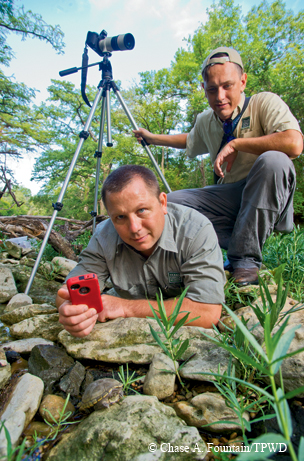Conservation: Monitoring Species for Change
This is Passport to Texas
Texas wildlife has a stake in the climate change lottery.
06—Climate change is going to affect species that are found – and breed – in backyards here in Texas.
Cullen Hanks, with Texas Nature Tracker, says models predicting the impact of climate change on wildlife are not set in stone, and so we need baseline information on each species.
33—To be able to document change, we need to know where things are before they change. And, this highlights the need of documenting the distribution of species that we have today in Texas.
And, there aren’t enough biologists to do all of that. And so, what we do is we reach out to citizens.
That’s exactly right! Texas is a big state with a lot of species, and the community of naturalists and citizens interested in wildlife in Texas can play a huge part in documenting wildlife in Texas.
Monitor species you see in your neighborhood, and then share your observations online.
17—ebird, a citizen science platform, created by the Cornell laboratory of Ornithology is a great way to maintain your checklist of birds. In addition, iNaturalist is a really useful platform for documenting your wildlife sightings of any species — not just birds.
Texas Parks and Wildlife has various projects on iNaturalist. Just go to the Texas Nature Trackers page on the Texas Parks and Wildlife website for details. The WSFR Program supports our series.
For Texas Parks and Wildlife…I’m Cecilia Nasti.



 Passport to Texas is a
Passport to Texas is a  Passport to Texas is made available by:
Passport to Texas is made available by: